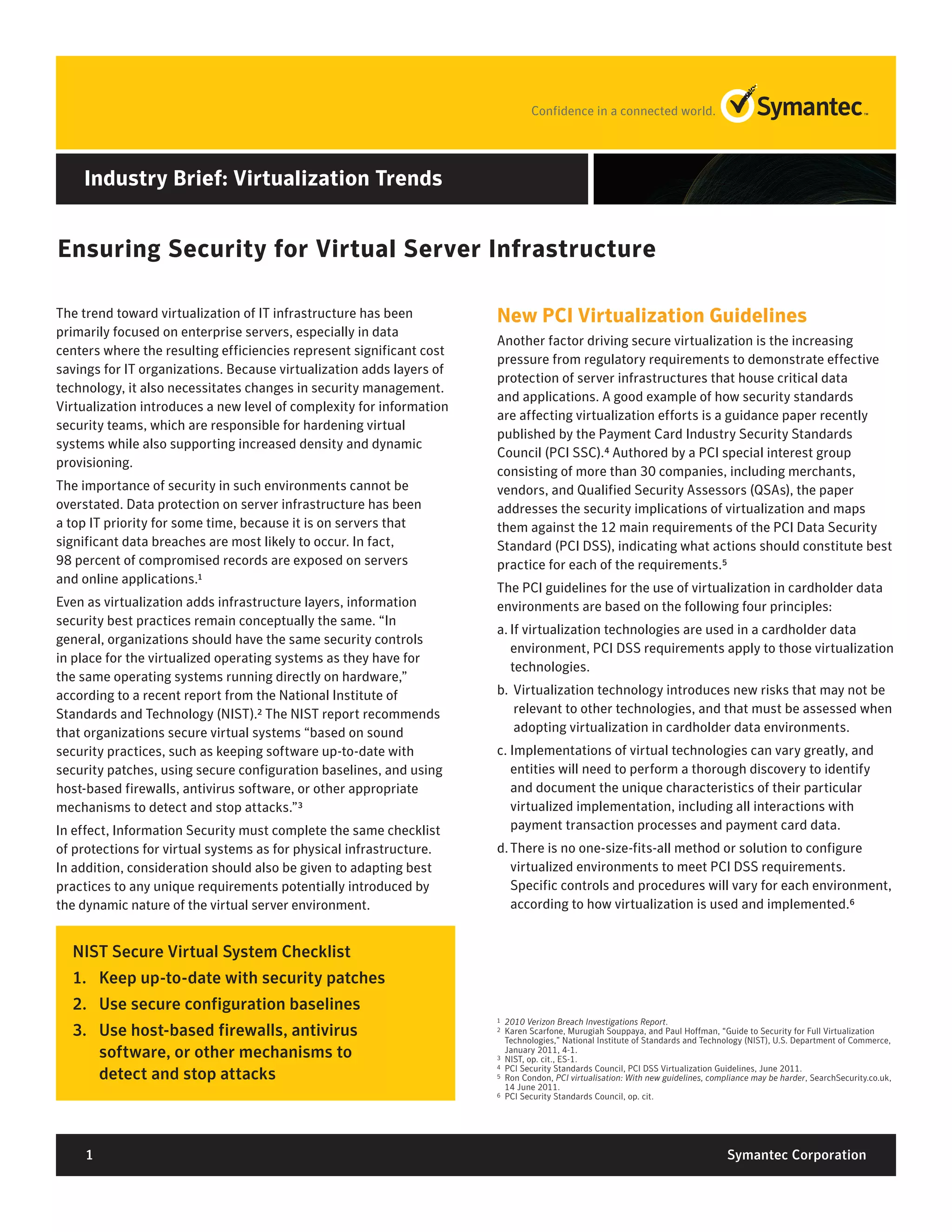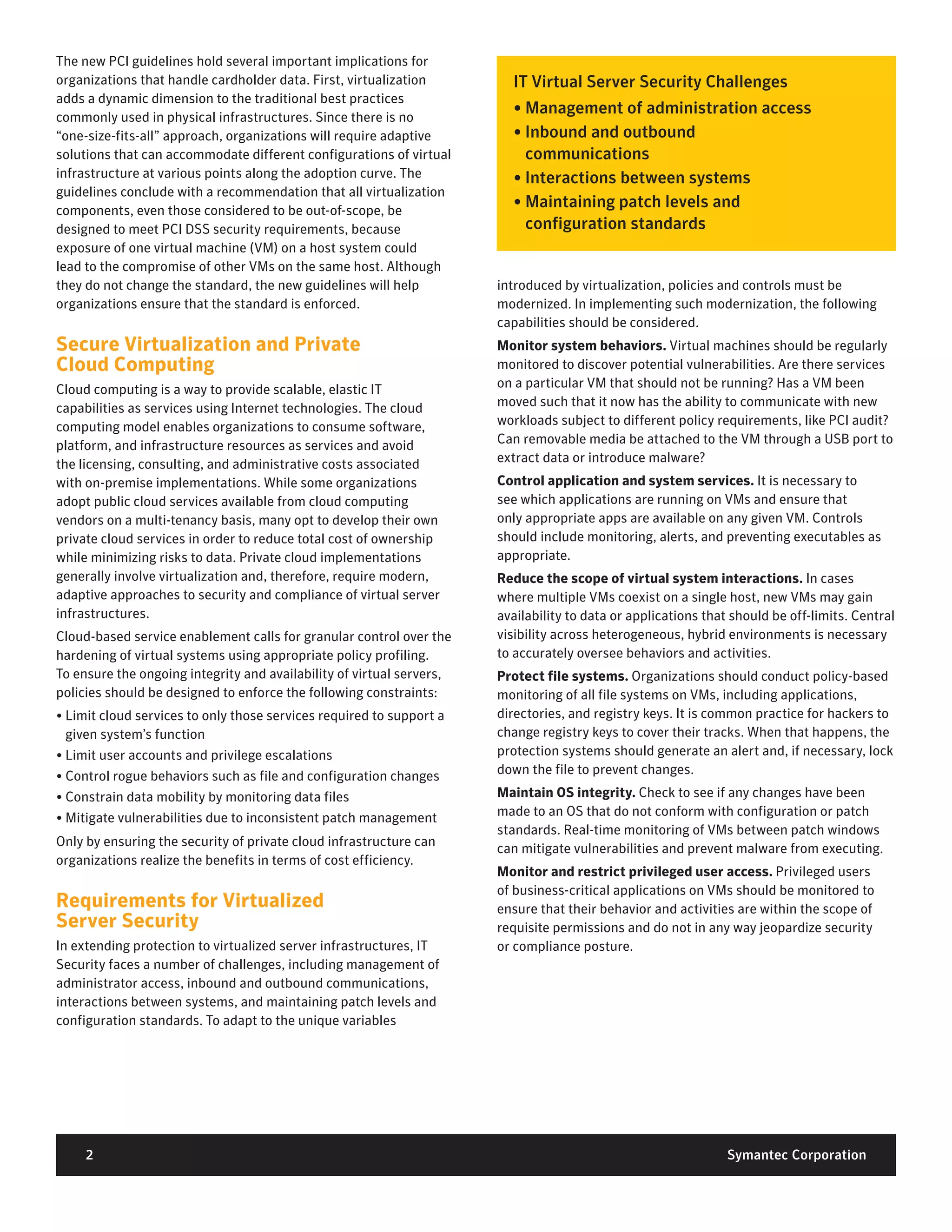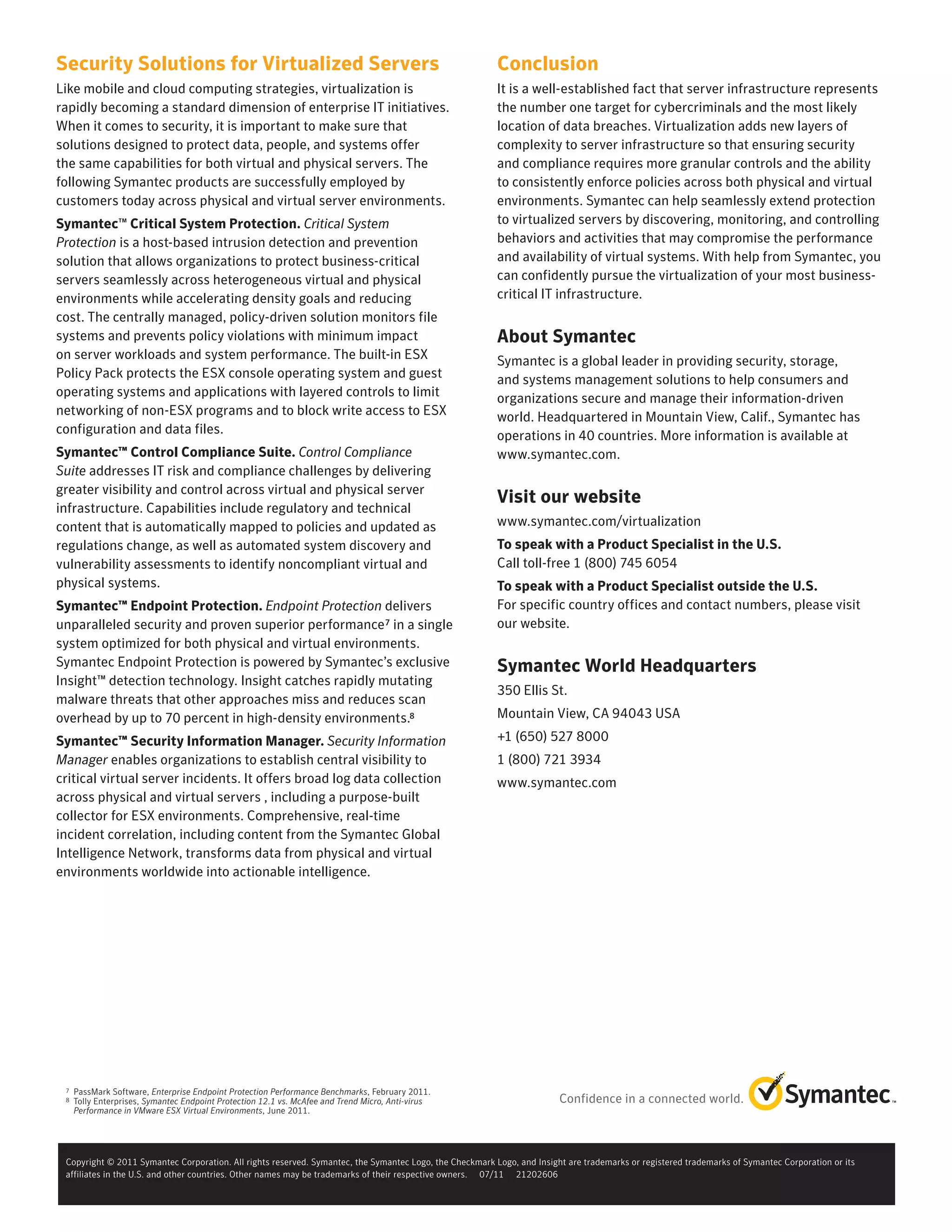1. Virtualization introduces new security challenges as it adds layers of technology and complexity to server infrastructure.
2. The Payment Card Industry (PCI) has issued new guidelines for securing virtual environments to address risks introduced by virtualization and ensure compliance with PCI data security standards.
3. Adaptive security solutions are needed to enforce policies across dynamic virtual environments and accommodate different virtual infrastructure configurations over time.


